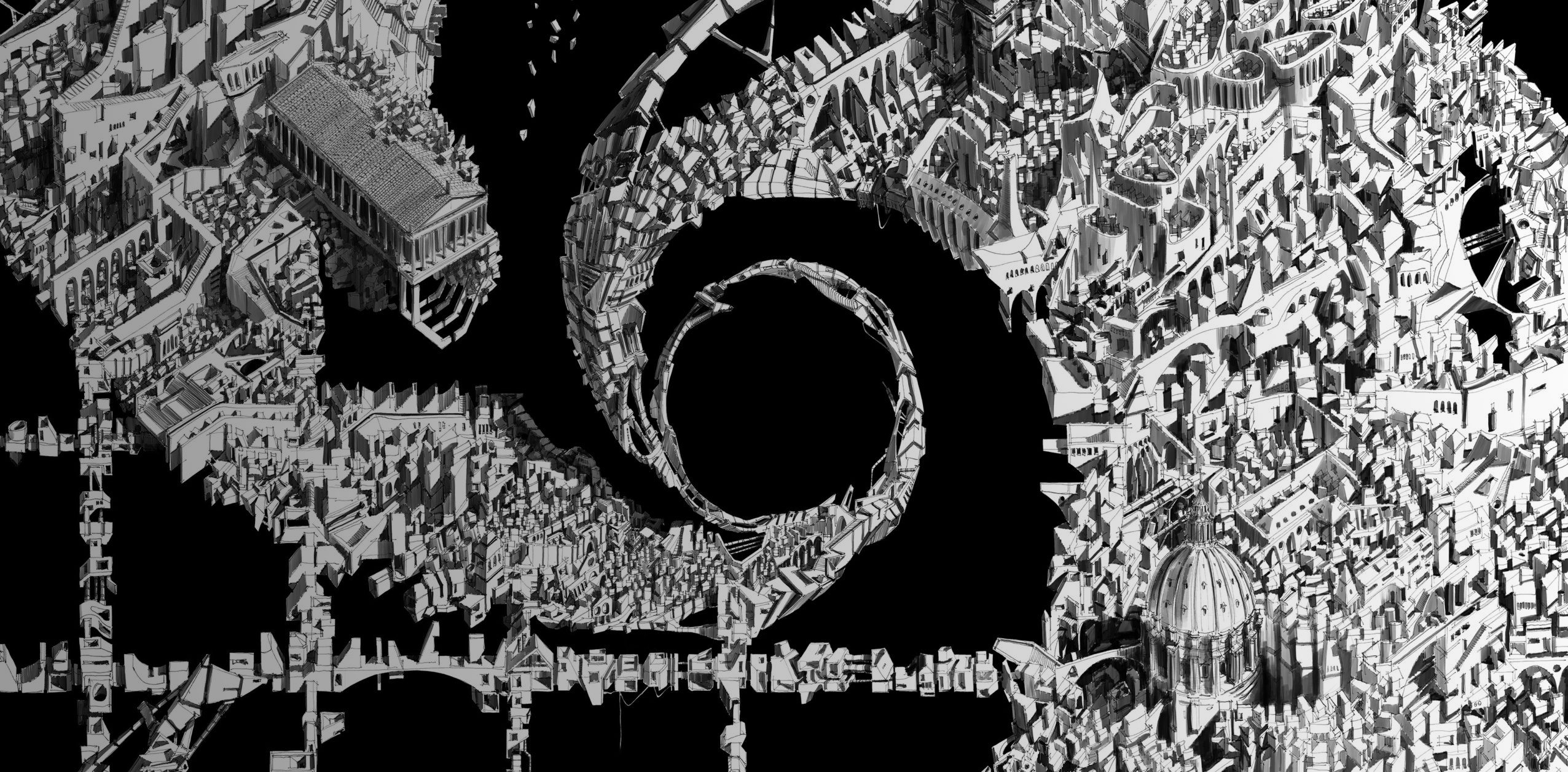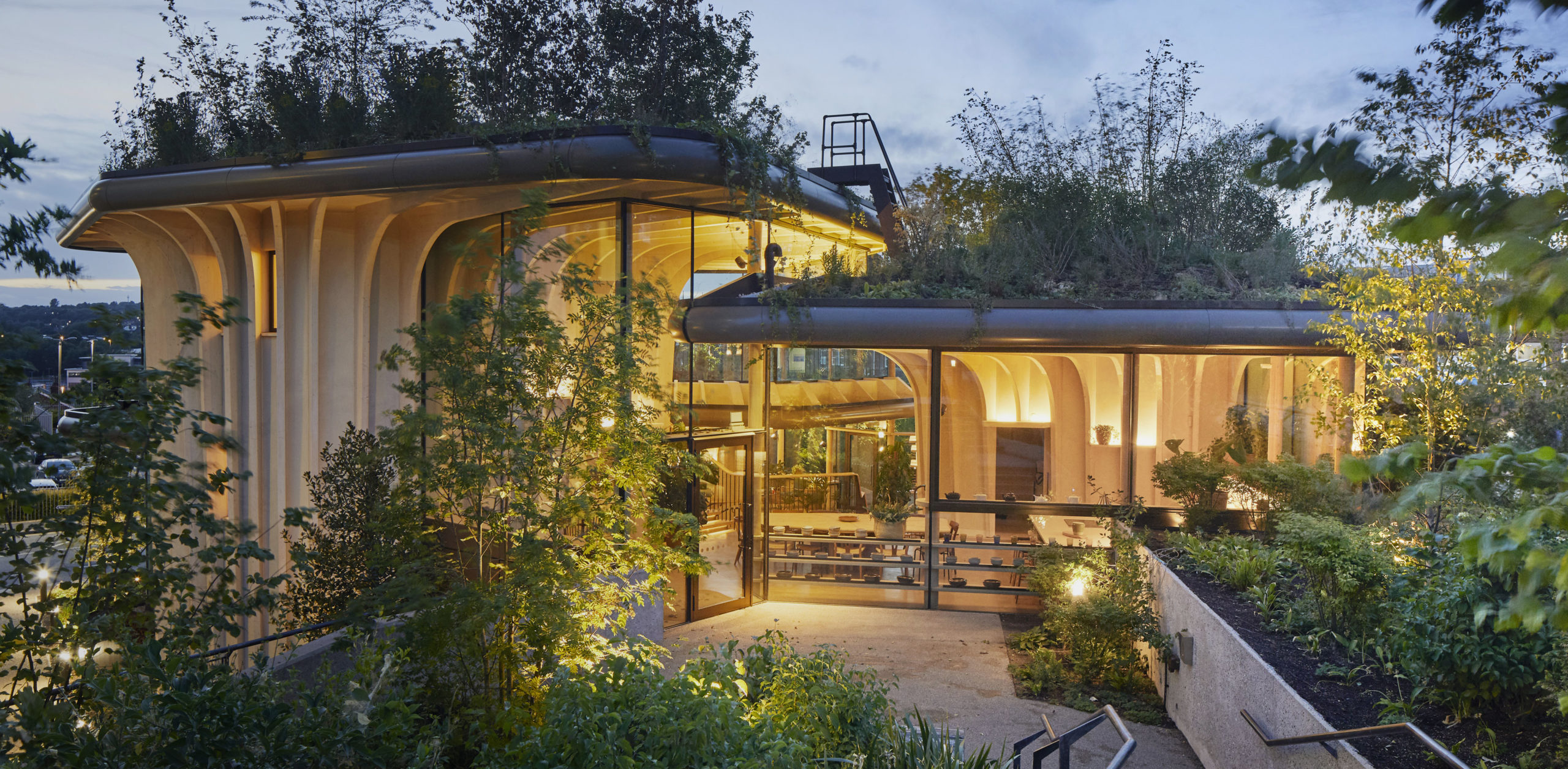Call for entries: The 14th Architizer A+Awards celebrates architecture's new era of craft. Apply for publication online and in print by submitting your projects before the Main Entry Deadline on December 12th!
Two and a half years after the devastating fire of April 2019, the cleaning and stabilizing of Notre Dame Cathedral’s remaining structure has finally been completed. The goal of the restoration project, stated by French president Emmanuel Macron, is to have the Cathedral ready for touristic visits by the 2024 Paris Summer Olympics.
Before the landing on the popular decision to restore and reconstruct the world-famous cathedral exactly as it used to be, Macron first suggested an architectural competition, calling for proposals that redesign the Cathedral in a “contemporary architectural gesture.” The suggestion was promptly followed by proposals from around the world, and many approached the call for a “contemporary” structure by using transparent glass appendages, adding structural glazing to the storied building. However, none of these proposals won popular public support — the majority of French people opposed the idea of modernizing the medieval Cathedral and wished to see it rebuilt identically.
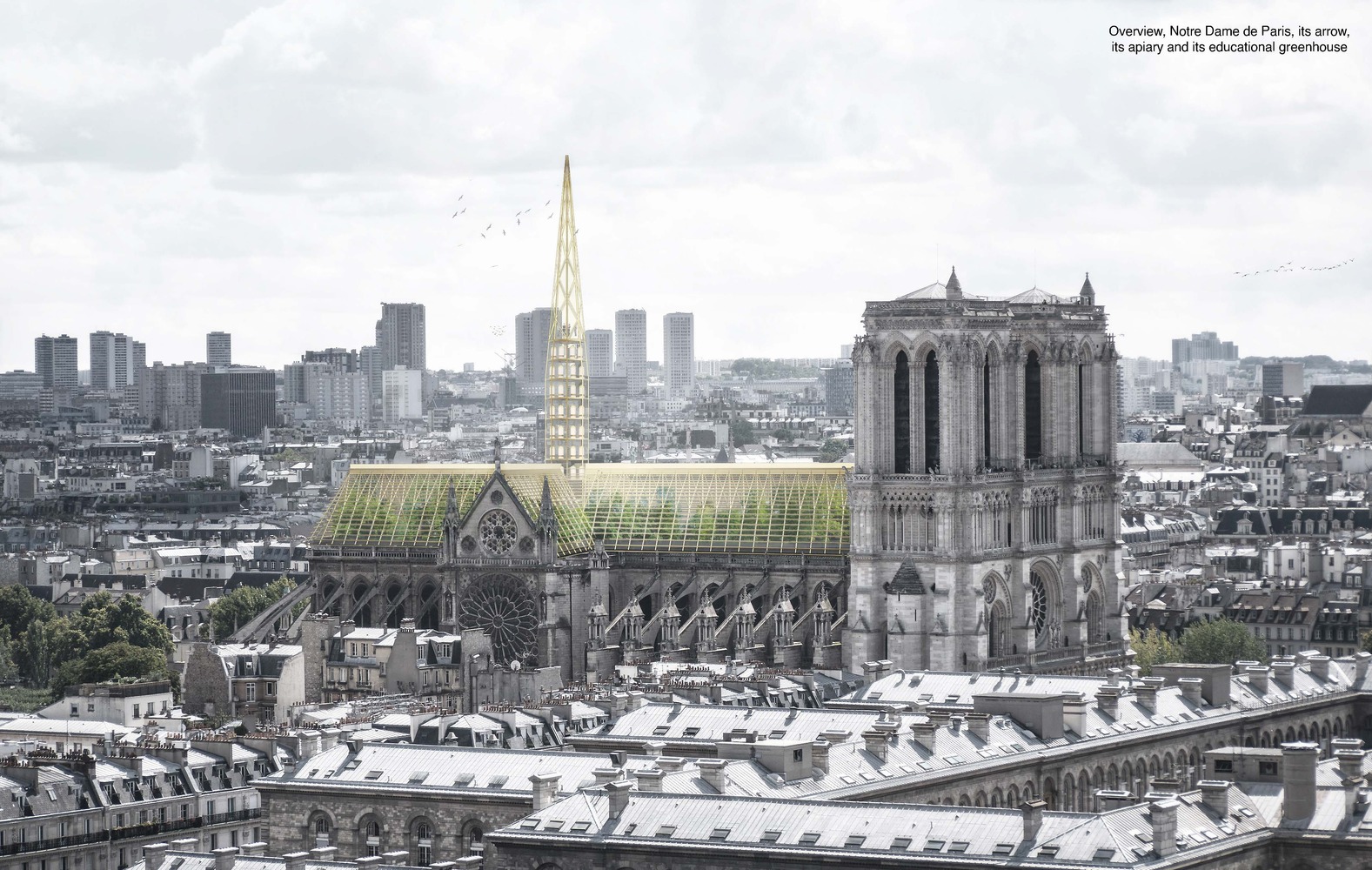
Notre Dame with a roof greenhouse proposed by Studio NAB
Understanding the short history of using glass materials in architecture allows us to glean one of the essential reasons that architects find difficulties in finding balance in their projects. Architects started to build with large sheets of glass only from the mid-19th century — this was when the technology made such construction possible. From that point forward, the characteristics of glass materials not only determined how they would be used, but also reshaped the way that architects designed and imagined buildings.
Countless modern (especially commercial) architecture projects are glass structures. Visually iconic, their transparent characteristics re-define the surrounding urban connections, building communication between the exterior and interior spaces. However, as we set the scene in the context of historical projects (e.g. Notre Dame Cathedral), the stylistic harmony runs the risk of being broken, generating visual inconsistency due to the disjuncture or harsh contrast between historic materials and their shiny, modern counterparts.
In the best case scenario, the architects may create a more harmonious relationship the original style and the refreshing aesthetics; however, this requires serious respect for the building’s history, as well as an understanding of glass’ material history, and its place in the wider context of the restoration project.
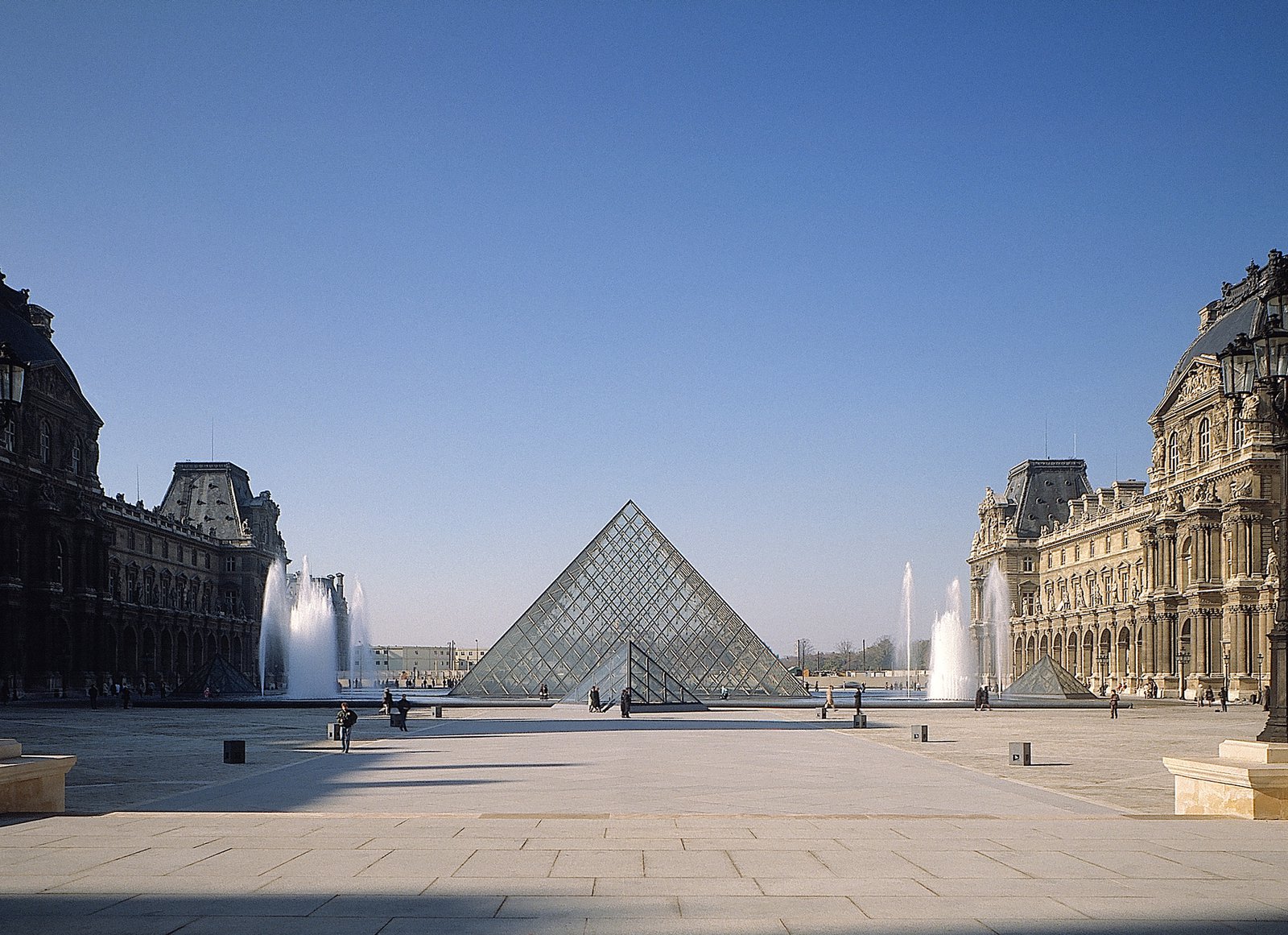
Exterior view of the largest glass pyramid, photo by Serge Hambourg via PEI COBB FREED & PARTNERS.
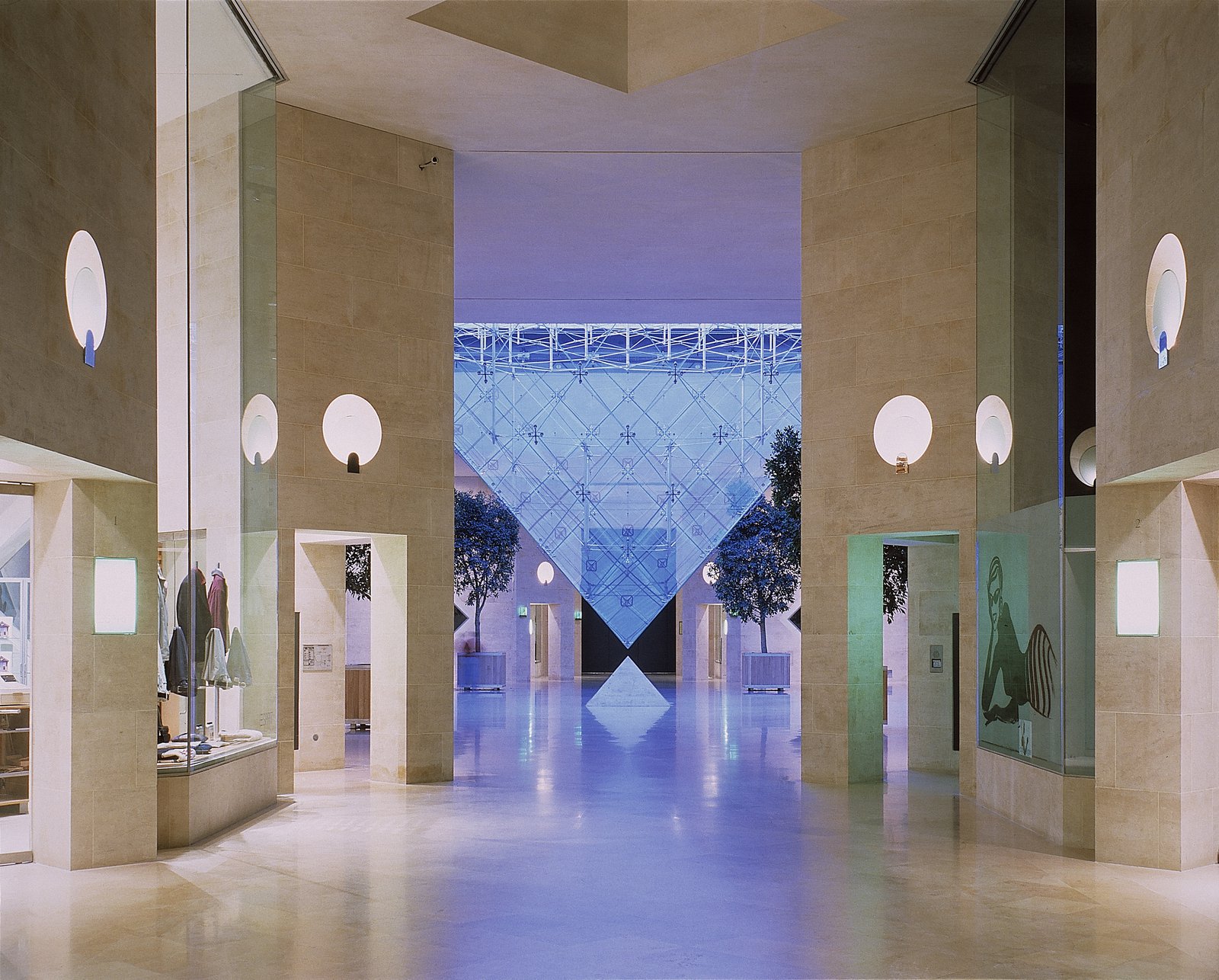
The inverted pyramid viewed from inside the Louvre, photo by Luc Boegly via PEI COBB FREED & PARTNERS.
Embracing the Beauty of Geometry: the Louvre Glass Pyramid
Completed in 1989, the Louvre Glass Pyramid by I. M. Pei is one of the most well-known projects that married classical and modern. The Baroque-influenced French Renaissance palace from 1546 was due for a “modernization” in 1983, and I. M. Pei was commissioned to design a new entrance for this French monument. In a playful reference to the Egyptian collections in the museum, a transparent pyramid was finally built.
The huge geometric expression of the structural glazing and metal frameworks looks nothing like the palace’s style. Such shocking visual contrast incited much controversy when it was first built; however, as time went on, people gradually accepted the contrast and now the Glass Pyramid is popular — and iconic — enough to be a touristic attraction in its own right.
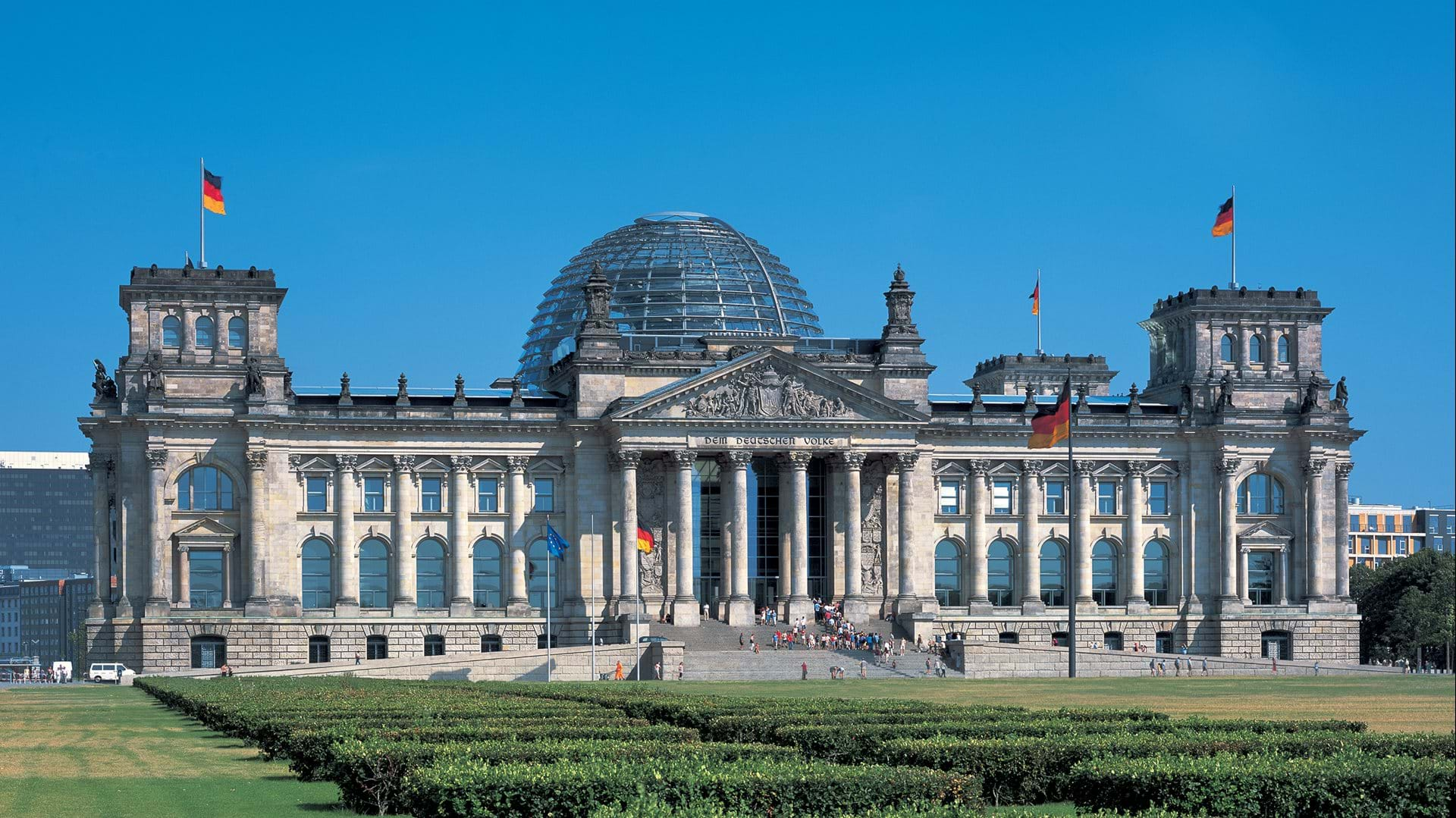
Exterior view of the Reichstag building, photo via Foster + Partners.
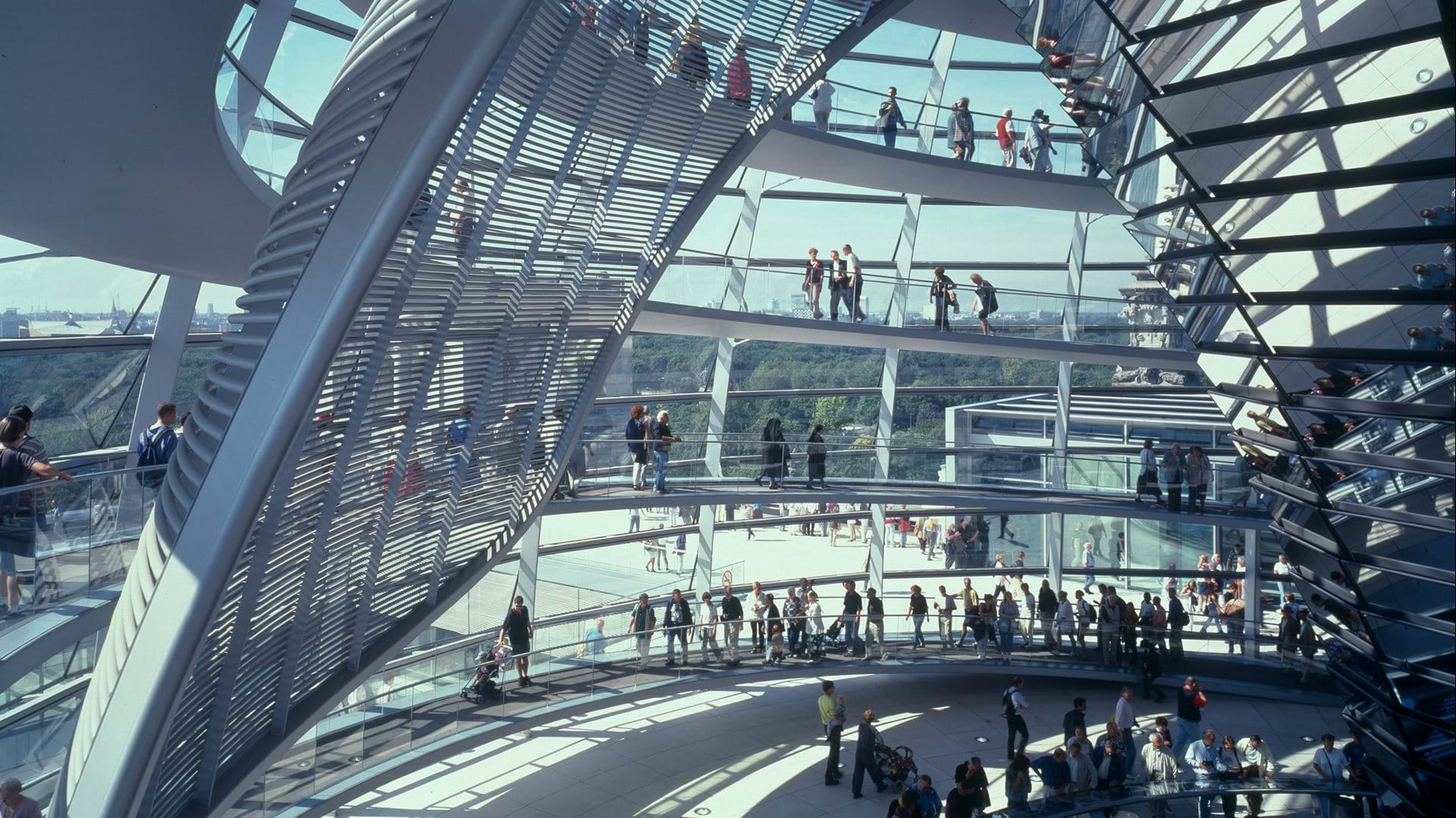
Inside the Reichstag Dome, photo via Foster + Partners.
Reborn From the Ruin: The Reichstag Dome
The Reichstag building, serving as a German parliament building, was originally built in 1894 in a Neo-Classical style designed by Paul Wallot. After enduring a fire, bombing and decades of neglect through the country’s turbulent 20th century, its restoration started in the 70s first on the remaining walls. After the country’s reunification in 1990, a complete reconstruction of the building — including its missing dome — finally started in 1995.
While the rest of the building remained mostly the same style as it used to be, the climax of Norman Foster’s design was a glass and steel dome that capped this new parliament building. The structural glazing of the new dome invites natural lighting into the main meeting space, representing the openness of the activities insides. To the public, the dome is a honeypot that functions as a museum as well as a viewing platform that views the parliamentary and government district of Berlin.

Exterior view of Porcelain Tower, photo by Fei Fang via Archiposition
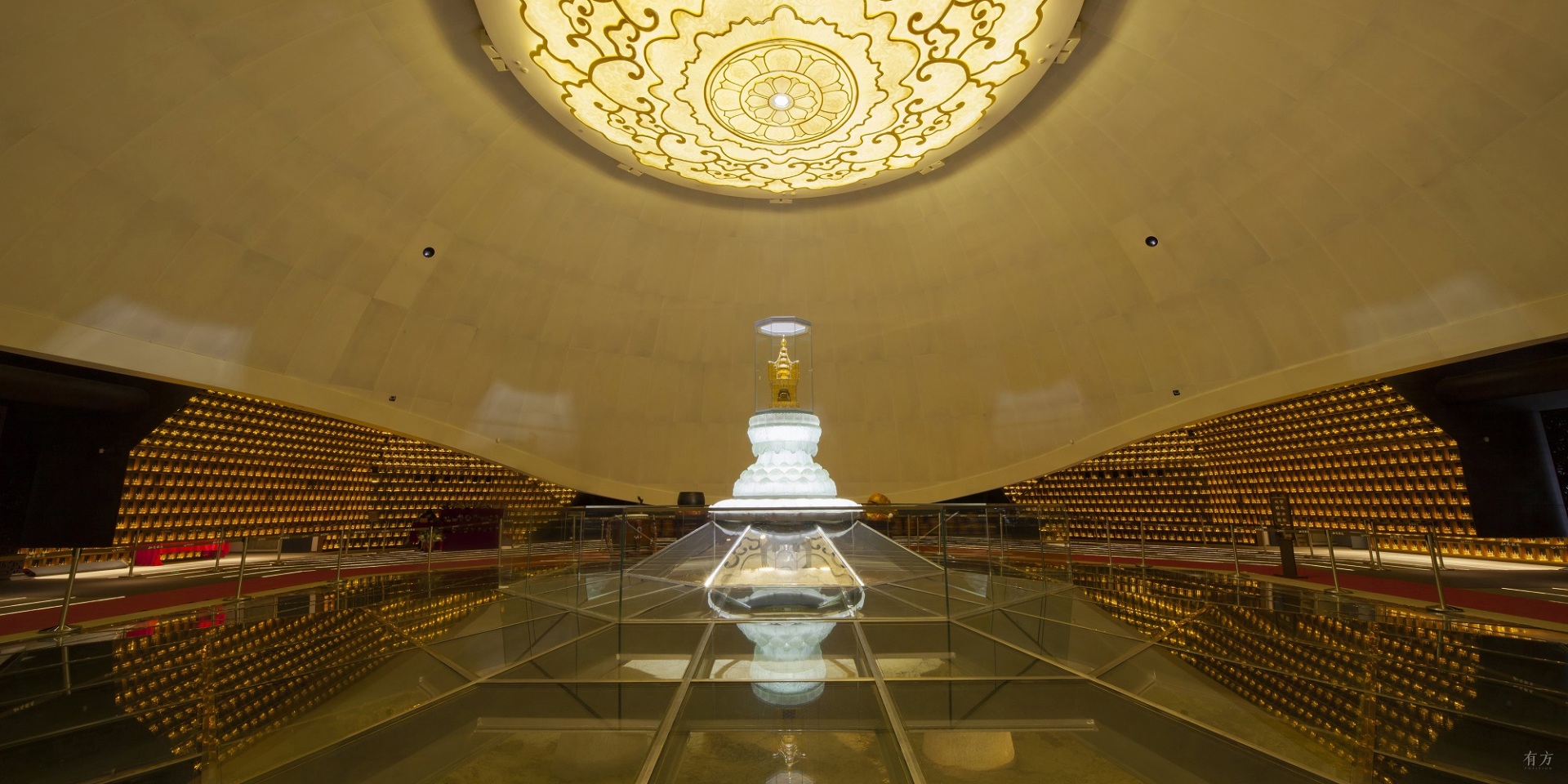
Inside the basement of Porcelain Tower, photo by Tao Geng via Archiposition
The Shade of a Crystal Tower: The Porcelain Tower of Nanjing
Formerly the Liuli Pagoda of the Great Bao’en Temple, the Porcelain Tower completed in 2016 is a modern reinterpretation of its 15th century’s original. The original pagoda was a miracle built completely in Liuli (colored glaze, made by melting colorful crystal into one) but was destroyed by war and fire in the mid-19th century, leaving only the basement structure. The restoration of the whole Great Bao’en Temple started in 2004, and the construction of the structural glazing for this new pagoda began in 2013 following the two-year-long competition and design refinement period.
To avoid damaging the historical basement, instead of making a replica in Liuli, a lighter structure of steel and low-iron glass that required less foundational support has been built. The reinterpreted pagoda still receives criticism from within China. Nonetheless, the design decision was explained by Prof. Chen, one of the lead architects of the Porcelain Tower project, as such: “We build the tower of our time while reflecting its history in the design, just like how it evolved in the past.”
Call for entries: The 14th Architizer A+Awards celebrates architecture's new era of craft. Apply for publication online and in print by submitting your projects before the Main Entry Deadline on December 12th!

 Grand Louvre Modernization
Grand Louvre Modernization  Reichstag, New German Parliament
Reichstag, New German Parliament 